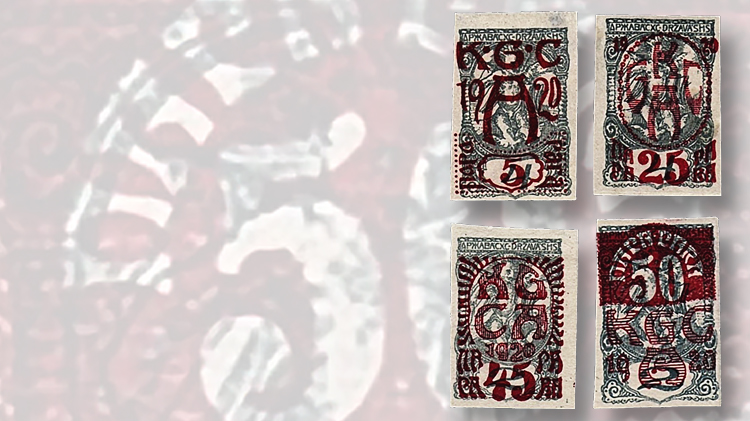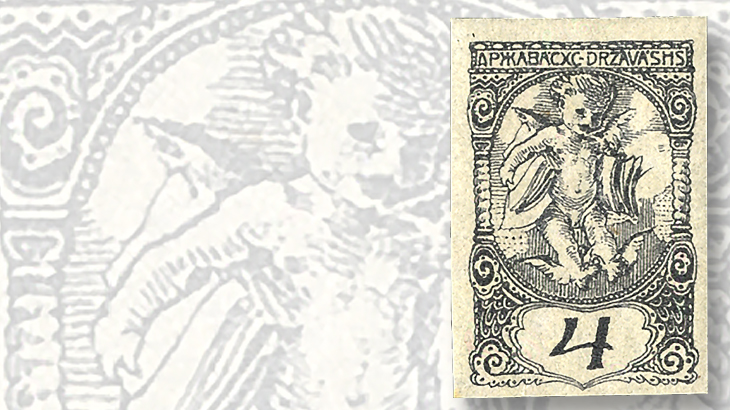World Stamps
Finding Carinthia and the reasons for its 1920 semipostal stamps: Stamp Collecting Basics
By Janet Klug
It’s a good idea to visit every page of your stamp albums at least once a year. Check that there are no incursions of insects or rodents, mold or mildew, and that no stamps are coming loose from hinges or mounts.
While you are doing that inspection, stop and enjoy the stamps. You might be surprised to find some forgotten but interesting stamps in your collection.
On a recent hot summer day, while enjoying the air conditioning, I started thumbing through a couple of my stamp albums.
Connect with Linn’s Stamp News:
Like us on Facebook
Follow us on Twitter
Keep up with us on Instagram
It turned into an all-day event that found me stalled on almost every page, where at least one stamp would catch my attention and send me off on a different tangent.
Was it mounted in the correct place? What was it? Why was it issued?
The first illustration here shows four of the numerous stamps that attracted my attention. The art nouveau lettering of “KGCA” stands out like a 1960s Fillmore West poster (remember the famed rock-and-roll venue in San Francisco?).
Each of the four stamps is different, and they all had been placed on a blank page in the album with the country name “Carinthia” penciled in.
Was that the right identification?
Seeking help from the Internet brought some information, linking Carinthia to Yugoslavia, Slovenia, and Austria. Carinthia was a duchy in southern Austria and northern Slovenia, and then part of the Austrian Empire/Austria-Hungary.
Austria seemed to be a good place to start, but it took time to discover any reference there to Carinthia. The name finally popped up following the listings for Austria semipostal stamps Scott B11-B29, issued Sept. 16, 1920.
The footnote in the Scott Classic Specialized Catalogue of Stamps and Covers 1840-1940 states: “Carinthia Plebiscite. Sold at three times face value for the benefit of the Plebiscite Propaganda Fund.”
One of these overprinted issues, Austria Scott B11, is shown in the second illustration.
This special stamp release was related to a referendum held Oct. 10, 1920, allowing Carinthians to vote whether to remain a part of Austria or become part of Yugoslavia.
The money from the sale of semipostal stamps made travel affordable to voters who wished to cast their ballots.
That was interesting, but I was still looking for more information about the art nouveau style overprints.
The first few pages of the Yugoslavia listings in the Scott Standard catalog contain stamps from the nations that joined together to form the Republic of Yugoslavia.
Turning the pages slowly resulted in finally finding something that looked familiar: a sweet little Eros newspaper stamp issued in 1919 for Slovenia. This stamp, Yugoslavia Scott 3LP2, is pictured nearby in the third illustration.
A bit later on in the Scott Standard catalog, an image of the 5-paras-on-4-filler overprinted stamp, the stamp at far left in the first illustration, appeared under a header for the listings for Yugoslavia 4LB1-4LB6: “Semi-Postal Stamps Issue for Carinthia Plebiscite.”
Finding this list in the catalog also allowed me to identify the other three stamps in the first illustration: the 25p-on-4f, Scott 4LB3; 45p-on-2f, 4LB4; and 50p-on-2f, 4LB5.
All four stamps were issued in 1920, along with two others not in my collection: 15p-on-4f, Scott 4LB2; and 2p-on-2f, 4LB6.
The “KGCA” overprinted on each stamp refers to the Carinthian Government Commission, Zone A.
I did wonder if there were listings in the Scott Standard catalog for Slovenia, but that section begins with the 1991 stamp issues, when Slovenia became independent. In today’s world, Carinthia is a state in southern Austria.
It may take a while to delve into unusual stamps, but it is always worth the work — following another thread of history and discovering a bit more about geography, and getting to be a sleuth figuring out the “whodunit?” creation story of unusually interesting and obscure stamps. A stamp collection is a gift that keeps on giving.
MORE RELATED ARTICLES
Headlines
-
US Stamps
Oct 7, 2024, 3 PMMcMurtrie dismissed as APS education director following Sept. 21 arrest
-
US Stamps
Oct 7, 2024, 12 PMVasiliauskas named president of Mystic Stamp Co.
-
US Stamps
Oct 6, 2024, 5 PMApgar souvenir card available
-
US Stamps
Oct 6, 2024, 4 PMFirst Continental Congress and U.N. stamps receive Scott catalog numbers











